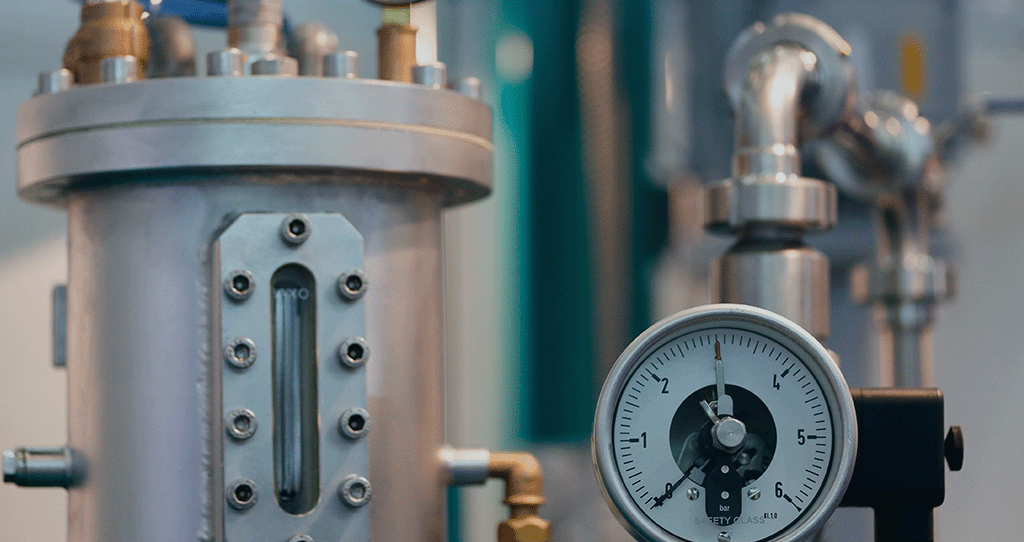
How standardized ISO 8573-1 dew-point sensors or transmitters reduce maintenance requirements
Compressed air and water don’t get along. Excess moisture in compressed air lines and equipment causes all kinds of problems, from corrosion and the washing away of lubricating oils, to component failure, system breakdown and high maintenance costs. Avoiding these issues requires the use of carefully selected compressed air drying units, which are often designed to meet different application requirements. In turn, each dryer depends on the accuracy and reliability of a dew-point sensor for its efficient operation.
All dryers are required to comply with the ISO 8573, a standard divided into nine sections. ISO 8573-1 defines the acceptable levels of contamination in each cubic meter of compressed air and includes not just moisture but also contamination from particles and oil aerosols. The remaining sections (ISO 8573-2 to ISO 8573-9) specify the test methods that should be used to measure each contaminant. ISO 8573-1 is further sub-divided into nine classes that categorize purity levels, ranging from Class 0 – the most stringent – to Class 9, with moisture being the only contaminant that is specified for all classes.
Read more about the ISO 8573 standard
Compressed air dryers Class 1 & Class 2
Water can be removed from compressed air systems using water separators and coalescing filters. On their own, however, they are unable to meet a higher level than Class 6 in the ISO 8573-1 standard. To achieve the highest quality compressed air, as well as the use of water separators and coalescing filters, a drying unit must be incorporated into the system. There are several types of compressed air drying technology, all of which are described in detail in the BCAS Best Practice Guide 104. The common factor throughout is the use of pressure dew point (PDP) as the key criterion to define the performance of each dryer.
Regardless of the drying technology used, high-performance compressed air dryers are often categorized as Class 1 or Class 2, relating to the criteria set out in the ISO 8573 standard.
Class 1 compressed air dryers must be capable of producing extremely dry air with a pressure dew point of -70 °C or lower. This makes them ideal for applications such as electronics, pharmaceutical production and healthcare, where the presence of moisture in the compressed air flow can have serious consequences for product quality or safety.
By comparison, Class 2 compressed air dryers, with a pressure dew point of -40 °C or better, are typically specified for use in food processing, general manufacturing or industrial processes, where the air quality requirements are less stringent than those required in Class 1.
In each case, the efficiency and cost of the air dryer is ultimately determined by the quality of the dew-point sensor used. This needs to be capable of accurately and consistently detecting extremely low levels of moisture, while providing fast response times and excellent stability, to minimize drift over time. The sensor must also be contaminant resistant, against oil vapors and suspended particulates, and easy to maintain, recalibrate and replace.
How standardized dew-point sensors reduce cost and complexity
For manufacturers of compressed air dryers and end users alike, the ideal solution when choosing dew-point sensors is a standardized device that can be used across all applications. For the OEM, this makes dryer specification and construction easier, while for end users – especially those with multiple dryers and production sites – it results in faster and lower-cost maintenance.
Our Michell Instruments Easidew Industrial Dew-Point Transmitter fits the brief, benefitting from the following features:
View the complete range of Dew-Point Transmitters and Sensors.
The Easidew is backed by comprehensive technical support services, including our UKAS-accredited sensor exchange and recalibration service, which helps to minimize the cost of maintenance while ensuring that our customers’ compressed air dryers operate to the optimum capability at all times. Learn more about our dew-point solutions for compressed air systems.
We are the world’s leading experts in moisture monitoring and dew-point measurement. We have eight different technologies covering all moisture applications, backed by unrivalled technical and customer support. To find out more, talk to one of our application specialists today.
Related Articles
Related Products
Dew-Point Transmitter - Michell Easidew EA2
Intrinsically Safe Dew-Point Transmitter - Easidew I.S.
Dew-Point Transmitter for Compressed Air Dryers - SF82
Want to see more information like this?
Sign up to one of our Industry newsletters and you’ll receive our most-recent related news and insights all directly to your inbox!
Sign Up